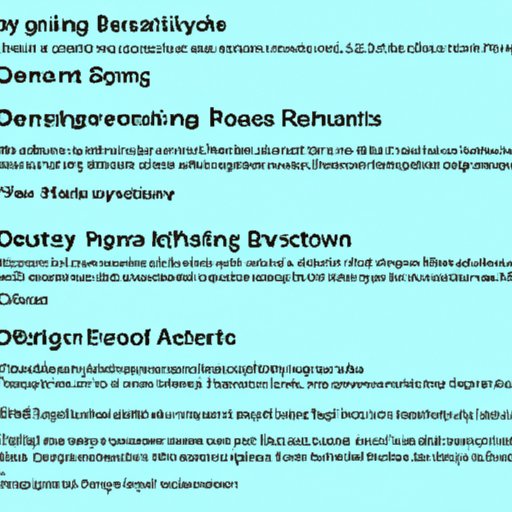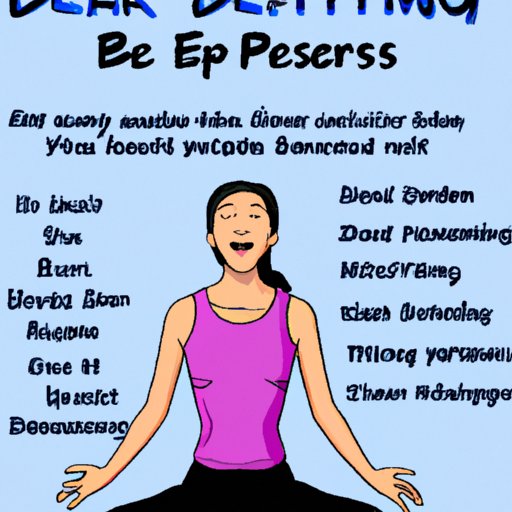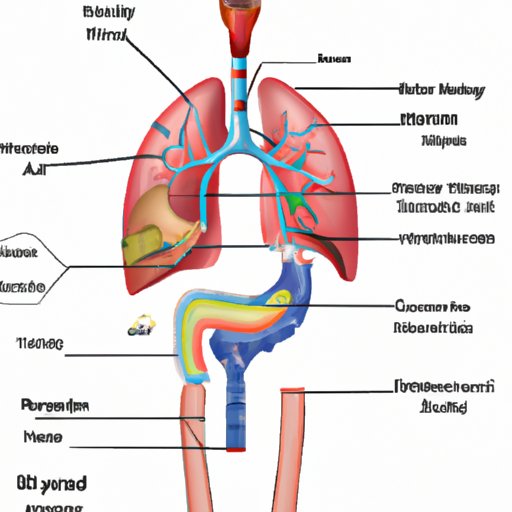Introduction
Deep breathing exercises are an effective way to relax and reduce stress. They can help improve your overall health and well-being by improving your respiratory system and boosting your energy levels. By taking deep breaths, you can also improve your sleep quality and reduce anxiety. In this article, we’ll explore what deep breathing exercises are, how they work, and how to do them properly. We’ll also provide tips, demonstrations, and specific exercises for relaxation, stress relief, and better sleep.

Definition of Deep Breathing Exercises
Deep breathing exercises, also known as diaphragmatic breathing or abdominal breathing, involve taking slow, deep breaths while focusing on your breath. The goal is to fill your lungs completely with air and then exhale slowly. This type of breathing helps to relax your body and mind, reduce stress, and improve your overall health.

Benefits of Deep Breathing Exercises
There are many benefits to doing deep breathing exercises regularly. These include:
- Reducing stress and anxiety
- Improving sleep quality
- Lowering blood pressure
- Increasing energy levels
- Boosting your immune system
- Improving your concentration and focus
Deep breathing exercises can also help improve your respiratory system by strengthening your diaphragm and increasing your lung capacity.

Anatomy of the Respiratory System
The respiratory system consists of several parts that work together to bring oxygen into the body and expel carbon dioxide. The main parts of the respiratory system are the nose, throat, trachea, bronchi, and lungs. Air enters the body through the nose and is filtered by tiny hairs called cilia. The air then travels down the throat and into the trachea, which divides into two bronchi and leads to the lungs. The lungs absorb oxygen from the air and send it to the bloodstream, where it is carried to the rest of the body. Carbon dioxide is then carried back to the lungs and expelled.
How Deep Breathing Exercises Impact the Respiratory System
When you take deep breaths, you are encouraging your lungs to expand fully, which increases the amount of oxygen in your bloodstream. This helps to strengthen your respiratory system and improves your overall health. Taking deep breaths also stretches the muscles in your chest and abdomen, which helps to increase your lung capacity and improve your breathing efficiency.
Step-by-Step Instructions for Doing a Deep Breathing Exercise
To get started with deep breathing exercises, follow these steps:
- Find a comfortable position. This can be sitting or lying down. Make sure your back is straight and your shoulders are relaxed.
- Place one hand on your stomach and the other on your chest. This will help you focus on your breathing.
- Inhale slowly and deeply through your nose, allowing your stomach to expand. You should feel your stomach rise as you inhale.
- Exhale slowly through your mouth, allowing your stomach to contract. You should feel your stomach fall as you exhale.
- Repeat the process 10-20 times, focusing on your breath and how your body feels.
It’s important to practice deep breathing exercises regularly in order to reap the full benefits. Aim to do the exercise at least once a day, or whenever you are feeling stressed or anxious.
Demonstration of Different Breathing Techniques
There are a variety of different breathing techniques that you can use to practice deep breathing exercises. To get started, try the following:
- Alternate nostril breathing: This technique involves alternating the inhalation and exhalation between your left and right nostrils. Start by closing off your right nostril with your thumb and inhaling through your left nostril. Then, close off your left nostril with your ring finger and exhale through your right nostril. Repeat the process 10-20 times, alternating nostrils with each inhale and exhale.
- Box breathing: This technique involves taking four equal-length breaths. Start by inhaling for four counts, holding your breath for four counts, exhaling for four counts, and holding your breath again for four counts. Repeat the cycle 10-20 times.
You can also find pictures and videos online that demonstrate different breathing techniques. Try searching for “deep breathing exercises” or “diaphragmatic breathing” to find helpful resources.
Tips for Making the Most of Your Deep Breathing Exercises
Here are some tips for making the most of your deep breathing exercises:
- Set goals: Set a goal for yourself, such as practicing deep breathing for 10 minutes every day. This will help keep you motivated and on track.
- Practice mindfulness: Focus on your breath and how your body feels during each exercise. This will help you stay in the moment and make the most of your practice.
- Incorporate movement: Try incorporating stretching or yoga poses into your deep breathing exercises. This will help you maximize the benefits of your practice.
Specific Breathing Exercises for Relaxation, Stress Relief, and Better Sleep
There are specific breathing exercises that can help with relaxation, stress relief, and better sleep. Here are some examples:
- Relaxation exercises: Take slow, deep breaths and focus on each inhalation and exhalation. Imagine a wave of relaxation washing over your body with each breath.
- Stress relief exercises: Take slow, controlled breaths and focus on releasing any tension or stress in your body with each exhale. Visualize all of your worries and anxieties leaving your body with each breath.
- Sleep exercises: Take slow, even breaths and focus on calming your mind and body. Visualize your worries melting away and imagine yourself drifting off to a peaceful sleep.

Apps and Tools to Help You Practice Deep Breathing Exercises
There are a variety of apps and tools available to help you practice deep breathing exercises. Here are some of our recommendations:
- Calm: This app provides guided meditations and breathing exercises to help you relax and reduce stress. It also includes mindfulness exercises and sleep stories to help you get a better night’s rest.
- Headspace: This app offers a range of guided meditations and breathing exercises to help you relieve stress and boost your mood. It also includes sleepcasts, which are designed to help you fall asleep faster.
- Breathe2Relax: This app provides step-by-step instructions for diaphragmatic breathing exercises. It also includes a tracking feature so you can monitor your progress.
These apps and tools can help you practice deep breathing exercises more effectively. However, it’s important to remember that the best way to get the most out of your practice is to commit to doing the exercises regularly.
Conclusion
Deep breathing exercises are an effective way to relax and reduce stress. They can help improve your overall health and well-being by improving your respiratory system and boosting your energy levels. By taking deep breaths, you can also improve your sleep quality and reduce anxiety. In this article, we explored what deep breathing exercises are, how they work, and how to do them properly. We also provided tips, demonstrations, and specific exercises for relaxation, stress relief, and better sleep. Finally, we discussed a variety of apps and tools that can help you practice deep breathing exercises more effectively.
(Note: Is this article not meeting your expectations? Do you have knowledge or insights to share? Unlock new opportunities and expand your reach by joining our authors team. Click Registration to join us and share your expertise with our readers.)
